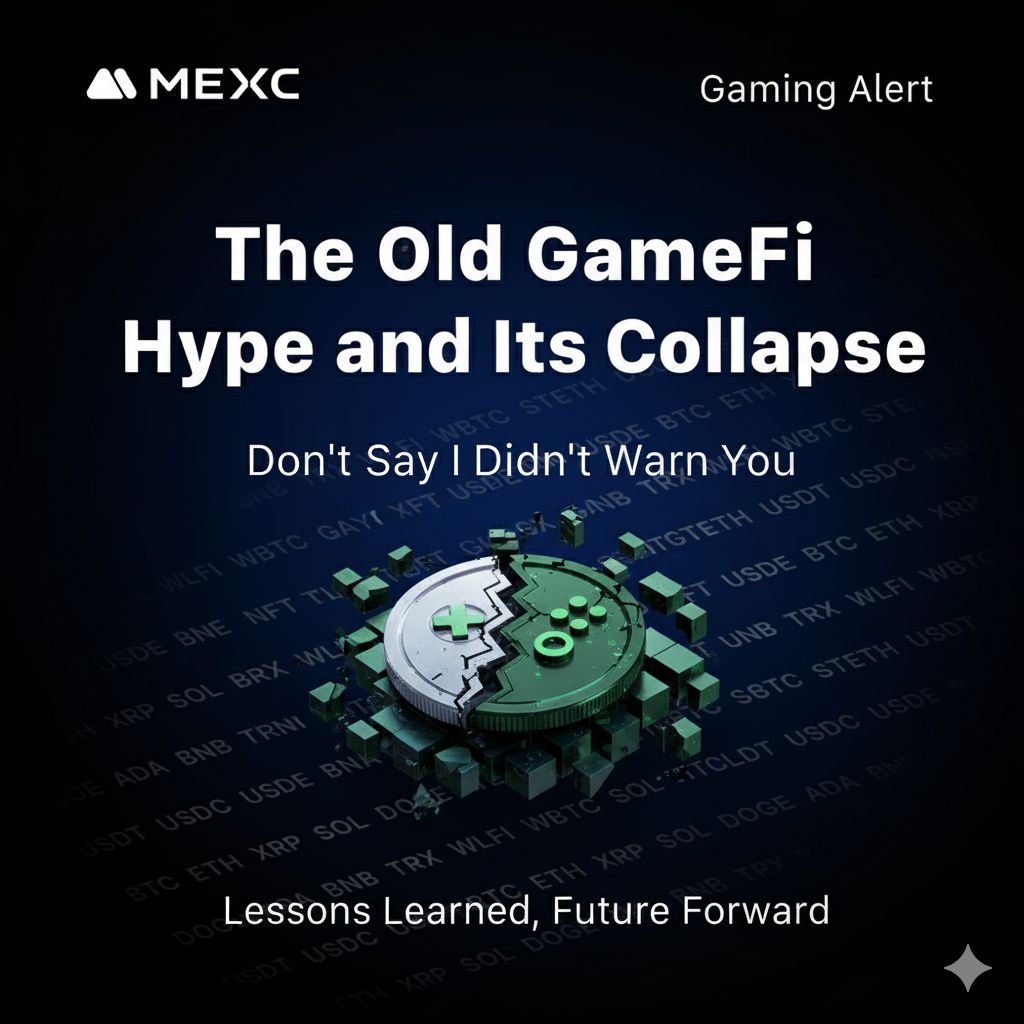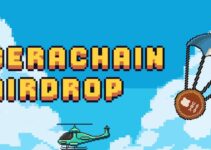
Back in 2021–2022, GameFi was the buzzword on every crypto villager’s lips. You know: “Play-to-Earn (P2E), get NFTs, make crypto from grinding monsters.” In some corners, it felt like the Holy Grail: get paid to game. But fast-forward to 2025, and many headlines are crying foul: “93% of GameFi games are dead,” with associated tokens dropping > 90% in value and daily active users vanishing.
Yes oh, the hype was real — but the fundamentals were often hollow. Many projects prioritized token speculation over sustainable economics. They ignored that a token is like pepper soup: you can’t just pour in pepper (supply) without balancing with yams, stockfish, ogbono (i.e. sinks, utility) or else the whole thing spoils.
Hence, we now enter the era of GameFi 2.0 — an iteration built less on get-rich-quick schemes and more on sound tokenomics, retention, real gameplay, interoperability, and community resilience.
In this article, we explore why token economics will be the decisive factor shaping which blockchain games live, which die, and which become mainstream. And we’ll pepper in some Nigerian flavor so you don’t sleep.
1.What Is GameFi 2.0? (Spoiler: It’s More Than Just “Play-to-Earn 2.0”)
To understand GameFi 2.0, first recall what broke in GameFi 1.0:
Over-reliance on reward token emissions that burn value
Shallow gameplay (players grinding tasks, not enjoying)
- No real sinks to absorb inflation
- Poor retention (players drop out fast)
- Lack of interoperability and locked ecosystems
GameFi 2.0 is emerging as the “next-gen” vision. According to SL2 Capital, it emphasizes interoperability, sustainable design, modular game economies, real ownership, and cross-game token flows.
In short, you should be able to use your token or NFT in more than one game, trade it, stake it, lend it, or use it for governance. The token isn’t just a “daily quest reward” but a meaningful piece of the ecosystem.
Imagine your in-game sword from Game A being usable (or rentable) in Game B, or that your token gives you rights in a DAO that influences game updates. That’s deeper than just “you kill 100 monsters, you get 10 tokens.”
2.Token Economics: The Heartbeat of GameFi 2.0
If GameFi is the body, token economics (tokenomics) is the heartbeat. Get it wrong, and the body dies. Here are critical aspects:
2.1 Emission & Inflation Control
One of the biggest mistakes early GameFi made was unlimited token minting to incentivize players. But when emissions outpace demand, inflation kills value. A token worth $1 today might be 1 cent tomorrow if everyone mints like there’s no tomorrow.
GameFi 2.0 demands strict emission schedules, emission curves, and token halving or decay mechanisms. Some projects use dual-token models (utility token + governance or reward token) to separate inflationary pressures from governance stake.
2.2 Token Sinks & Utility
If you only emit tokens and don’t find ways to make them leave circulation (sinks), you’ll just inflate the supply. Good tokenomics builds token sinks — ways for users to burn, spend, lock or stake tokens purposefully. Sinks might be:
- In-game purchases (skins, boosters)
- Upgrades or crafting materials
- Entry fees, market trading fees
- Renting, staking, governance fees
- Cross-game bridging fees
A good analogy: in Nigeria, you may print many naira notes, but if people don’t have good reasons to spend them, inflation ruins buying.
2.4 Dual / Multi-Token Architecture
Many modern GameFi projects separate utility tokens from governance / stake tokens. The utility token handles in-game actions, reward issuance, and trade. The governance token gives holders voting rights or share of protocol revenue.
This separation helps prevent governance tokens from being diluted by inflation too quickly. This architecture also creates clearer incentives — “I hold the governance token because I want a voice and share, not just because I want to play-quest daily.”
2.5 Vesting, Lock-ups & Halts
Team tokens, investor allocations, and early backers must be vested and locked up to avoid sudden dump pressure. A token that starts with a flood of “team sell” can crash before players even log in.
GameFi 2.0 demands long vesting schedules (12–48 months) and cliff periods. Also, protocols sometimes employ token halts or emissions slowdown when market conditions are bad — akin to central banks raising interest rates.
2.6 Interoperability & Composability
One of the innovations in GameFi 2.0 is making tokens and NFTs usable across ecosystems. For example, your NFT acquired in a fantasy game might be staked in a DeFi pool or even used in another game’s economy. Interoperability expands demand and utility, giving more use-cases to your token.
By giving tokens cross-game pathways, a game is no longer an isolated economy — you plug into a larger, richer fabric of connected worlds.
2.7 Security, Audits & Anti-Abuse
You can design the best tokenomics on paper, but if hackers exploit smart contracts, or bots farm rewards, everything collapses. Robust security, auditing, and anti-exploit measures are non-negotiable. Bot-resistant mechanisms and careful reward caps prevent exploits that can tank your economy overnight.
3.Trends and Pressures in 2025: The Realities GameFi 2.0 Must Survive
Let’s ground the theory in what’s currently happening:
3.1 Many GameFi Projects Died
A sobering statistic: 93% of GameFi games from past cycles are now “dead” — most lasted just ~4 months with collapsing token value and minimal daily users.
This mass attrition teaches us: hype without substance fails fast.
3.2 Market Growth Still Very Real
The macro trend is favorable: analysts estimate that Global GameFi could reach around USD 95 billion by 2034, riding ~32.7% CAGR.
So while many will fail, those who get fundamentals right can ride this wave for years.
3.3 Players Demand Real Gameplay & AAA Quality
Gamers are not dumb. They don’t want to click “collect reward” all day — they want engaging, fun, immersive gameplay. 2025 trends suggest that AAA-quality blockchain games will finally begin to emerge, not just “blockchain wrapper” games.
Tokenomics must support these richer experiences, not just reward grinders.
3.4 Africa & Nigeria Are Hot Markets
Africa is becoming frontline territory for GameFi adoption. Nigeria, Kenya, Ghana, Ethiopia, etc. are key because the youth population is large, internet penetration is rising, and there’s hunger for new income streams.
Furthermore, Nigeria’s iGaming scene is already seeing a crypto shift.
So yes — your Naija gamer cousin might become a blockchain economy participant, not just a TikTok dancer.
3.5 New Valuation Methods: GDP of Game Worlds
Traditional metrics like TVL (total value locked) are insufficient to measure a game’s health. A blockchain economist proposes modeling a game’s economy more like a real-world GDP: consumption (in-game purchases), investment (durable items, land), net exports (fiat entering game).
This shift forces designers to think of games as micro-economies, not just marketing tokens.
4.Why Tokenomics Will Decide the Future
At this point you might say: “Okay, tokenomics is important. But why decisive?” Because:
- Survival or Death: A game with poor tokenomics will collapse, even if the artwork is beautiful.
- Player Retention: When token utility and rewards are balanced, players stick around. When you can keep a portion of token flow in sustainable circulation, retention improves.
- Investor Confidence: VCs and crypto funds will only back games whose token models avoid dump, inflation, or exploit risk.
- Network Effects: If token is usable across games, it gains external demand, extending the reach and resilience of the project.
- Monetization Without Paywalls: Smart tokenomics lets you monetize without forcing heavy paywalls — creating a fair balance between free users and paying users.
- Governance & Community: Tokens tied to governance make communities stakeholders. That alignment ensures better decision-making and less hostile forks or splits.
So in the GameFi 2.0 round, tokenomics isn’t a side concern — it’s the battlefield.
5.Case Studies & What Went Wrong / Right
Let’s look at a few real-world examples to see what lessons we can extract.
5.1 Axie Infinity — The Cautionary Tale
Axie Infinity was a poster child for GameFi. Players earned SLP tokens and held AXS governance tokens. But the SLP token collapsed > 99% from its peak due to over-emissions, weak sinks, and speculative pressure.
Also, a $620 million hack of Ronin network shocked confidence.
The lessons: even with massive traction, tokenomics missteps and security breakdowns can sink you.
5.2 Crypto: The Game — A New Breed
This is a “survival / reality” style blockchain game: entry fee in ETH, daily elimination rounds, and token-based structure. It fuses real stakes and game mechanics.
They ensure value by requiring actual “skin in the game” — only committed players join, and tokenomics are baked into gameplay. But such high entry also limits scale to serious players only.
5.3 ServerFi & Research Directions
Academic work suggests new models like ServerFi, which emphasizes privatization via asset synthesis and continuous rewards for high-retention players — basically designing token engines that reward stable engagement rather than grind.
These more experimental models hint at where tokenomics may evolve: symbiosis, not extraction.
6.Bringing in the Nigerian Flavor (Because We Must)
It’s easy to wax philosophical about tokenomics; but here in Nigeria, things must make sense to “ordinary Joses” and “Auntie Ifes”. So let’s translate:
- Suppose ₦cNGN (the new regulated stablecoin in Nigeria) is accepted in your game. That gives your token an on-ramp into the Nigerian economy.
- You might allow players to pay fees, purchase items, or stake tokens in naira terms, lowering friction for local users.
- Build guilds (quasi-cooperatives) in Nigeria. Guilds pool capital to rent NFTs or tokens to newbies, earning a share — but ensure tokenomics protect guilds from collapse.
- Don’t just reward “kill 100 goblins for 20 tokens”. Make quests that matter — like contributing to local community tasks or linking real-world data (say agriculture, weather games).
- Use local cultural motifs: tokens can be named “EtuCoin,” “Owambe Token,” or “Agbada NFT.” Make the economic metaphor close to home.
Also, sprinkle humor: imagine telling your friend, “No be now I dey play game to earn token so I fit buy garri.” That’s believable.
7.Risks, Challenges & What Could Go Wrong
No matter how well you plan, there are landmines. Some key risks:
- Regulation & policy: Governments may classify tokens as securities. In Nigeria, CBN & SEC may intervene.
- Speculation & pump-and-dump: If users enter to flip tokens, economy swings violently.
- Smart contract bugs / hacks: Vulnerabilities can destroy trust.
- Low liquidity: If token has no buyers, it’s worthless.
- User onboarding friction: Wallet setup, gas fees, bridging — too many hurdles kill adoption.
- Competition: Many projects vying for the same user base and token capital.
GameFi 2.0 will need to navigate all these to survive.
8.Future Outlook & Final Thoughts
GameFi isn’t dead — it’s entering adolescence. In 2025 and beyond, the winners will be those who:
- Treat tokens as real economies
- Build games people love, not just “token minters”
- Design healthy, controlled emission and sinks
- Enable interoperability, cross-game paths
- Align communities, governance, and incentives
In Nigeria, this is an opportunity. If someone builds a GameFi 2.0 project that respects local users, accepts naira stablecoins, and rewards real gameplay, they might quietly become a trillion-naira darling.
Let me close with a joke (you asked for humor): If your token has no sinks, it’s like a sieve chasing water — you’ll carry plenty now, but later nothing remains. Don’t let your token economy end up as “Na so we dey chop emptiness.”
Disclaimer: This content is for educational and reference purposes only and does not constitute any investment advice. Digital asset investments carry high risk. Please evaluate carefully and assume full responsibility for your own decisions.
Join MEXC and Get up to $10,000 Bonus!



